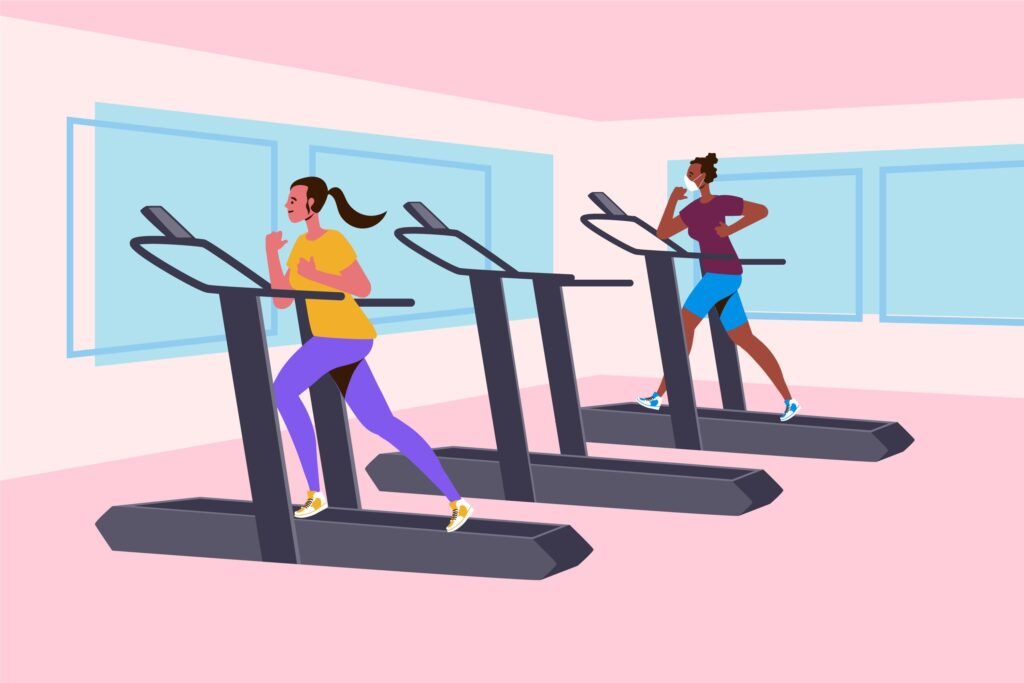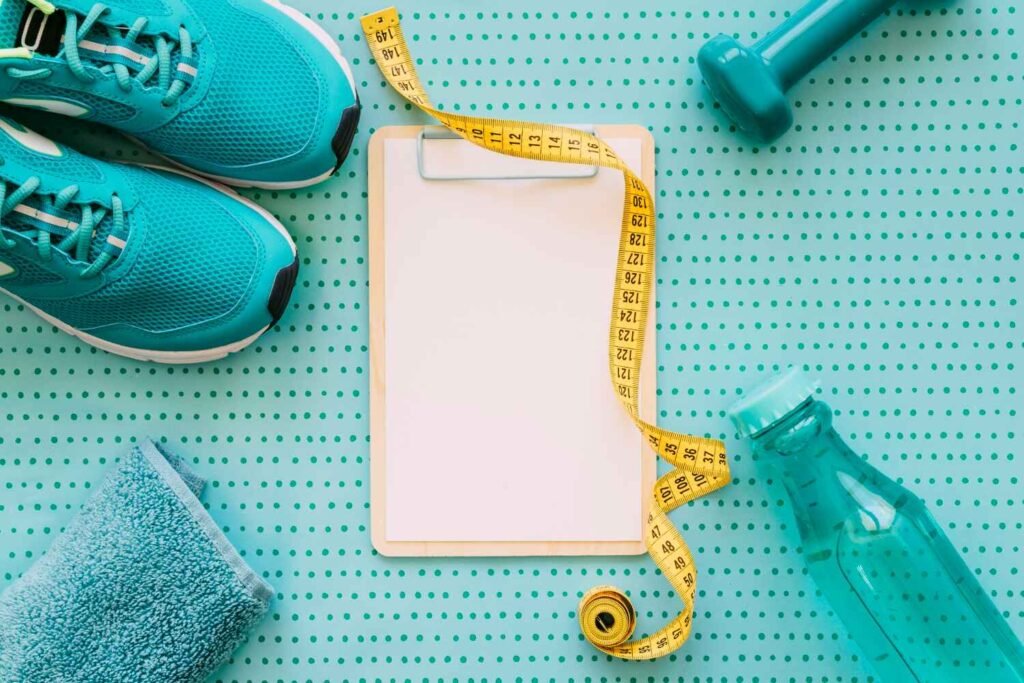
Soft Fitness: A Gentle Approach to Wellness
Introduction to Soft Fitness
In today’s fast-paced world, wellness often gets overlooked or overshadowed by rigorous fitness trends that promise dramatic transformations. However, not everyone thrives under the pressure of intense workouts or grueling regimens. This is where soft fitness comes in—a gentler, more sustainable approach to health and wellness. By focusing on low-impact exercises, mindful movement, and gradual progress, soft fitness ensures that physical activity is inclusive and enjoyable for everyone, regardless of age or fitness level.
Why Soft Fitness?
Soft fitness caters to individuals who may find high-intensity training intimidating or unsuitable. Whether you’re recovering from an injury, managing a chronic condition, or simply seeking a balanced approach to exercise, soft fitness is about listening to your body and embracing movement that feels good. This approach offers a host of benefits, including improved flexibility, stress reduction, and long-term consistency.
Benefits of Soft Fitness
1. Reduced Risk of Injury
Unlike high-intensity workouts that can strain joints and muscles, soft fitness focuses on low-impact exercises that prioritize safety. Activities like yoga, tai chi, and pilates strengthen muscles while reducing the likelihood of overexertion or injuries. This makes it an excellent option for beginners or those resuming exercise after a long break.
2. Supports Mental Well-being
Soft fitness isn’t just about physical health; it’s also a pathway to mental peace. Practices such as mindful stretching or gentle yoga promote relaxation and reduce stress. By connecting the mind and body, soft fitness creates a holistic wellness routine that encourages mental clarity and emotional balance.
3. Builds Sustainable Habits
One of the biggest challenges in fitness is maintaining consistency. High-intensity workouts can feel daunting, leading many to abandon their routines prematurely. Soft fitness, with its approachable exercises, fosters habits that are easier to stick to over time, ensuring lasting benefits.
Core Elements of Soft Fitness
1. Mindful Movement
At the heart of soft fitness is the concept of mindful movement—paying attention to how your body feels as you exercise. Unlike traditional workouts that emphasize speed or repetition, mindful movement encourages slow, deliberate actions that improve balance and coordination.
2. Gentle Workouts
Soft fitness routines include exercises like:
- Yoga: Enhances flexibility and calms the mind.
- Pilates: Strengthens core muscles and improves posture.
- Tai Chi: A flowing, meditative practice that enhances balance and reduces stress.
3. Flexibility Training
Stretching is a vital component of soft fitness, helping improve range of motion and alleviate tension. A regular stretching routine can enhance mobility, especially for individuals with sedentary lifestyles.
4. Breathing Techniques
Controlled breathing plays a significant role in soft fitness. Techniques like diaphragmatic breathing or pranayama (yogic breathing) not only improve oxygen flow but also reduce anxiety and foster mindfulness.
Who Can Benefit from Soft Fitness?
1. Beginners
For those just starting their fitness journey, soft fitness provides an inviting entry point. It removes the intimidation factor associated with gyms or intense classes and focuses on exercises that anyone can master.
2. Seniors
Soft fitness is particularly beneficial for older adults looking to maintain mobility and strength without overexertion. Low-impact activities are kinder to aging joints and help enhance quality of life.
3. Individuals with Chronic Conditions
Whether managing arthritis, back pain, or cardiovascular concerns, soft fitness offers a tailored approach that supports health without exacerbating symptoms.
4. Busy Professionals
For those juggling demanding schedules, soft fitness provides a manageable alternative. Even short sessions can yield significant physical and mental health benefits.
How to Get Started with Soft Fitness
Starting a soft fitness routine is simple, and the best part is that you don’t need any specialized equipment or prior experience. Here’s a step-by-step guide to help you ease into a gentler approach to wellness:
- Set Realistic Goals
Begin by identifying what you want to achieve with your fitness routine. Are you looking to reduce stress, improve flexibility, or gently build strength? Setting clear and achievable goals can keep you motivated and focused. - Choose the Right Activities
Select exercises that align with your goals and comfort level. Some excellent soft fitness activities include:- Gentle Yoga: Ideal for improving flexibility and reducing stress.
- Walking: A low-impact way to boost cardiovascular health and clear your mind.
- Tai Chi: A flowing movement practice that enhances balance and mental clarity.
- Stretching Routines: Perfect for releasing muscle tension and enhancing mobility.
- Start Slow and Progress Gradually
One of the principles of soft fitness is taking things slow. Start with short sessions—around 10-15 minutes—and gradually increase duration and intensity as your body adapts. Remember, consistency is more important than intensity. - Focus on Proper Form
Proper form ensures that you’re getting the most out of each movement while reducing the risk of injury. Pay attention to posture, alignment, and breathing. Consider taking a class or watching guided videos to learn the correct techniques. - Listen to Your Body
Soft fitness is all about tuning in to your body’s signals. If you feel pain or discomfort, modify the movement or take a break. The goal is to feel refreshed and energized, not strained or exhausted.
Incorporating Soft Fitness into Daily Life
Soft fitness isn’t limited to designated workout times—it can be seamlessly integrated into your daily routine. Here’s how to make gentle movement a natural part of your life:
- Stretch During Work Breaks
Sitting for long hours can lead to stiffness and poor posture. Take five-minute breaks throughout the day to stretch your neck, shoulders, and legs. These micro-movements can improve circulation and reduce tension. - Practice Mindful Walking
Turn a simple walk into a mindful experience. Focus on your breath, notice your surroundings, and pay attention to how your body moves. This not only improves physical health but also reduces stress and promotes mental clarity. - Breathe Deeply
Incorporate deep breathing exercises into your morning routine or before bed. Techniques like diaphragmatic breathing help calm the nervous system and improve oxygen flow, enhancing overall well-being. - Use Gentle Exercise for Winding Down
Instead of collapsing onto the couch after a long day, try gentle yoga or stretching to unwind. This helps your body relax, improves sleep quality, and reduces anxiety.
Soft Fitness for Mental Health
1. Reduces Anxiety and Stress
Gentle exercises like yoga, tai chi, and mindful stretching help lower cortisol levels, the hormone responsible for stress. By focusing on your breath and slow movements, you create a sense of calm and presence.
2. Boosts Mood Naturally
Soft fitness activities stimulate the production of endorphins, also known as “feel-good hormones.” These hormones naturally elevate your mood, helping combat feelings of sadness or anxiety.
3. Enhances Mind-Body Connection
Activities like yoga and pilates emphasize the connection between body and mind. This increased awareness helps you recognize physical manifestations of stress, such as muscle tension, and address them through movement and breathing.
4. Improves Sleep Quality
Soft fitness helps calm your nervous system, making it easier to fall and stay asleep. Gentle stretches or restorative yoga before bed can promote deep relaxation, leading to more restful sleep.
Common Misconceptions About Soft Fitness
1. “Soft Fitness Isn’t Effective”
Some people believe that low-impact exercises aren’t as effective as high-intensity workouts. The truth is, soft fitness can improve strength, flexibility, and cardiovascular health when done consistently. It also promotes long-term adherence, which often yields better results over time.
2. “Soft Fitness Is Only for the Elderly”
While soft fitness is beneficial for older adults, it’s suitable for everyone. Whether you’re a busy professional, a new parent, or someone recovering from an injury, gentle exercises can enhance overall well-being.
3. “You Can’t Build Strength with Soft Fitness”
Strength-building doesn’t always require heavy weights or intense workouts. Exercises like pilates, bodyweight training, and resistance band workouts can effectively build and tone muscles in a low-impact way.
4. “Soft Fitness Is Boring”
Soft fitness offers a wide variety of activities—from yoga flows to nature walks—that keep things interesting. The key is finding activities you genuinely enjoy and incorporating them into your routine.
Tips for Staying Motivated
- Find a Workout Buddy
Exercising with a friend can make your soft fitness routine more enjoyable and hold you accountable. - Mix It Up
Variety keeps things fresh. Alternate between yoga, pilates, walking, and stretching to keep your routine exciting. - Celebrate Small Wins
Acknowledge your progress, no matter how small. Whether it’s holding a yoga pose longer or walking an extra mile, every step counts. - Create a Relaxing Environment
Make your workout space inviting. Soft lighting, calming music, and a clutter-free area can enhance your experience.
Creating Your Personalized Soft Fitness Routine
Building a soft fitness routine that fits your lifestyle and goals is the key to long-term success. Let’s break down the steps to create a personalized plan that keeps you motivated and consistent.
1. Identify Your Goals
Before you dive into soft fitness, determine what you want to achieve. Do you want to:
- Improve flexibility and mobility?
- Manage stress and enhance mental well-being?
- Gently build strength and endurance?
- Recover from an injury or manage a chronic condition?
Having clear goals helps you select the right activities and track your progress effectively.
2. Select a Mix of Activities
A well-rounded soft fitness routine incorporates various types of exercises. Here’s a suggested weekly mix to keep things balanced and engaging:
- Flexibility & Mobility (2-3 times a week):
Yoga, stretching sessions, or foam rolling. - Strength Training (2 times a week):
Pilates, bodyweight exercises, or resistance band workouts. - Cardiovascular Health (2-3 times a week):
Brisk walking, gentle cycling, or swimming. - Mindful Movement (Daily):
Short breathing exercises, tai chi, or mindful walking.
3. Create a Weekly Schedule
Plan your workouts for the week to build consistency. Here’s an example of a balanced soft fitness schedule:
- Monday: Gentle yoga (30 minutes)
- Tuesday: Brisk walk (20-30 minutes)
- Wednesday: Pilates or bodyweight exercises (30 minutes)
- Thursday: Stretching routine (20 minutes)
- Friday: Tai chi (30 minutes)
- Saturday: Nature walk or swimming (45 minutes)
- Sunday: Rest and relaxation or restorative yoga (30 minutes)
4. Be Flexible with Your Plan
Soft fitness emphasizes listening to your body, so it’s important to adjust your schedule when needed. If you’re feeling tired or sore, opt for a lighter activity or rest. The goal is to maintain a sustainable, enjoyable routine.
Incorporating Soft Fitness into Different Lifestyles
For Busy Professionals
Time constraints shouldn’t stop you from staying active. Here are some tips to integrate soft fitness into a busy schedule:
- Micro-Workouts: Short 10-15 minute sessions during breaks.
- Desk Stretches: Relieve tension with neck, shoulder, and back stretches at your desk.
- Mindful Commuting: Walk or cycle part of your commute to work.
For Parents
Balancing family life and fitness can be challenging, but soft fitness makes it achievable:
- Family-Friendly Activities: Practice yoga or go for walks with your kids.
- Nap-Time Workouts: Use your child’s nap time for a quick stretching session.
- Evening Wind-Down: Do gentle exercises after your children go to bed to relax and de-stress.
For Seniors
Soft fitness is ideal for maintaining mobility and strength as you age:
- Chair Yoga: Seated poses improve flexibility and reduce stiffness.
- Water Exercises: Gentle on the joints, swimming or water aerobics improve strength and balance.
- Balance Training: Simple exercises like standing on one foot help maintain stability and prevent falls.
Essential Soft Fitness Equipment
While soft fitness doesn’t require heavy gym equipment, having a few basic items can enhance your experience:
- Yoga Mat: Provides a cushioned surface for stretching, yoga, and pilates.
- Resistance Bands: Great for gentle strength training and muscle toning.
- Foam Roller: Helps with muscle recovery and relieves tension.
- Comfortable Clothing: Loose, breathable attire allows for easy movement.
- Supportive Footwear: Essential for walking, tai chi, or other standing exercises.
Tracking Your Progress in Soft Fitness
1. Keep a Journal
Document your workouts, how you feel, and any improvements you notice. Reflecting on your progress can keep you motivated.
2. Set Milestones
Small, achievable milestones—like increasing the duration of your yoga session by 5 minutes or walking an extra half mile—help you stay committed.
3. Measure Non-Scale Victories
Soft fitness isn’t about weight loss alone. Celebrate achievements like:
- Improved flexibility
- Reduced stress levels
- Better sleep quality
- Enhanced mood and mental clarity
4. Use Technology
Fitness apps and wearable devices can track your steps, heart rate, and workout duration, offering insight into your overall activity levels.
The Importance of Rest and Recovery
Rest is a crucial part of any fitness routine, and soft fitness is no exception. Recovery allows your body to heal, adapt, and grow stronger. Here are some tips for effective rest:
- Schedule Rest Days: Plan at least one full rest day per week.
- Practice Active Recovery: Gentle stretching or restorative yoga helps with muscle recovery without overexertion.
- Prioritize Sleep: Aim for 7-8 hours of quality sleep each night to support overall health.
- Listen to Your Body: If you’re feeling fatigued or sore, don’t hesitate to take an extra rest day.
Soft Fitness: A Lifelong Journey
Soft fitness isn’t a quick-fix trend; it’s a sustainable approach to wellness that can be enjoyed for a lifetime. By focusing on gentle, mindful movement, you create a foundation of health that supports both your body and mind.
Key Takeaways
- Inclusivity: Suitable for all ages, fitness levels, and lifestyles.
- Holistic Benefits: Improves physical health, mental well-being, and emotional balance.
- Sustainability: Easy to maintain over the long term, promoting consistency.
- Mindfulness: Encourages you to listen to your body and move with intention.
Embrace soft fitness as a way to nurture yourself, reduce stress, and build a healthier, happier life—one gentle step at a time.



